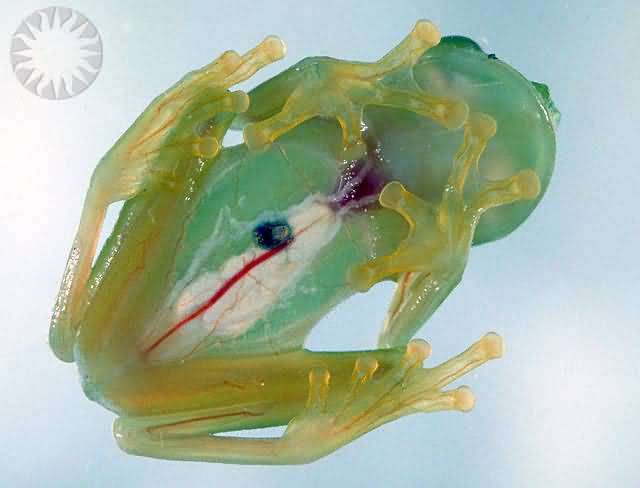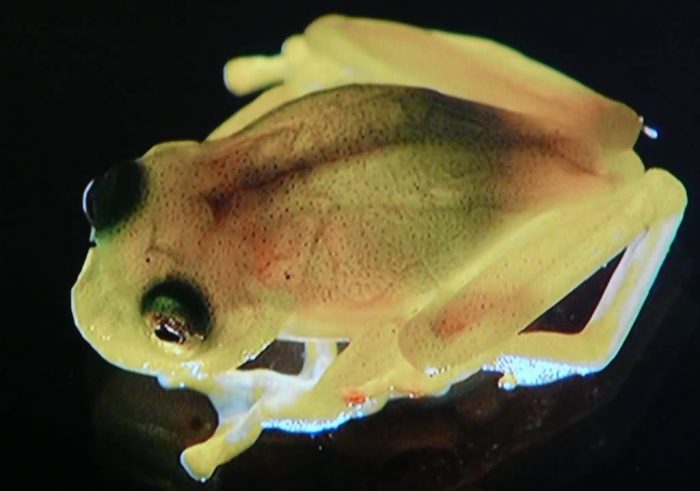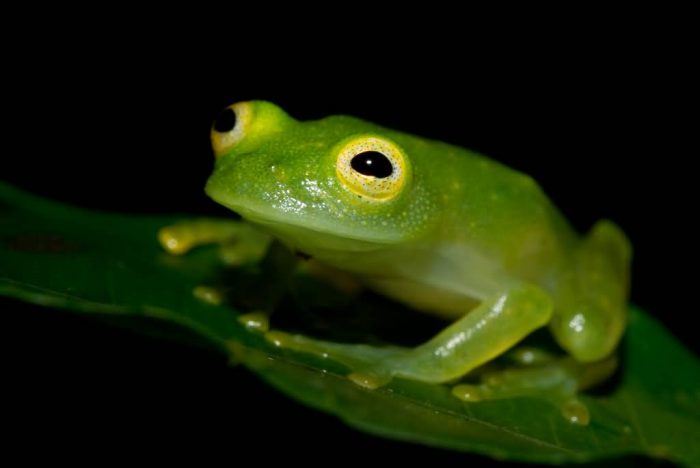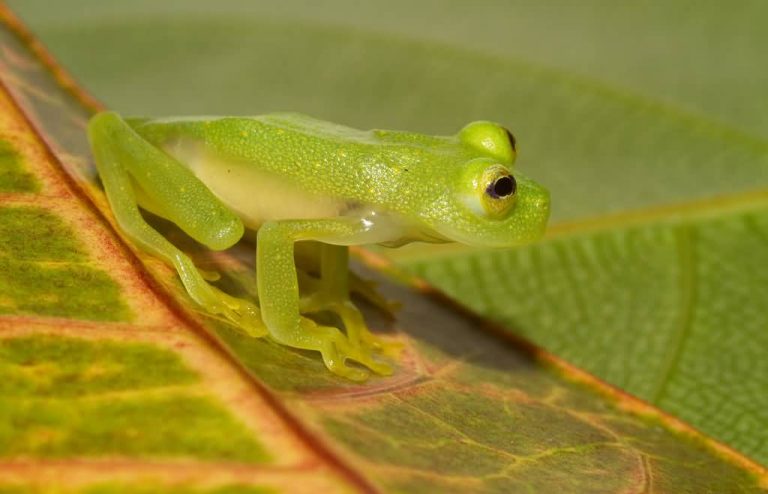The coloration of most glass frogs are primarily lime green. The internal viscera, including the heart, liver and gastrointestinal tract are visible through this transparent skin, hence the common name of frog.

Public.Resource.Org /Public Domain | Transparent Body Part Of Glass Frog
Glass frogs are mostly arboreal. They live along rivers and streams during the breeding season and are particularly diverse in montane cloud forests of Central and South America, although some species occur also in Amazon and Chocoan rainforest and semi-deciduous forests.

Virginia Manso /CC BY 2.0 | Glass Frog
Glass frogs are generally small about 3 to 7.5 cm in length. They are known to eat their own young. Outside of the breeding season, some species live in the canopy.

Brian Gratwicke /CC BY 2.0 | Glass Frog



Connect with us